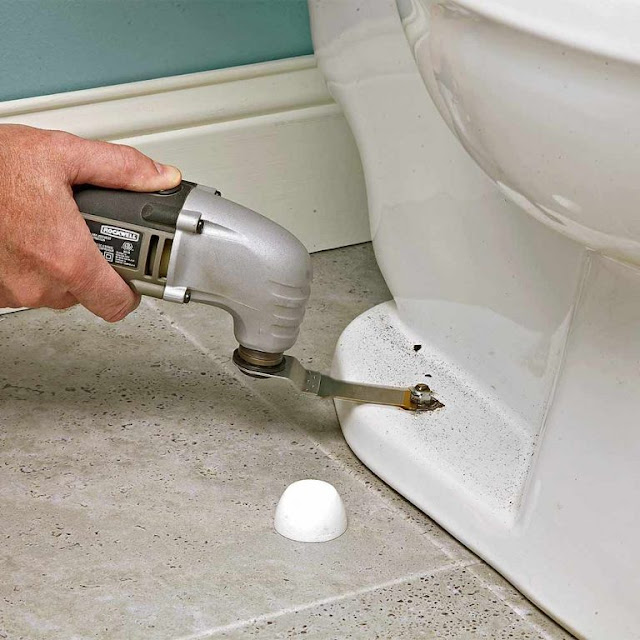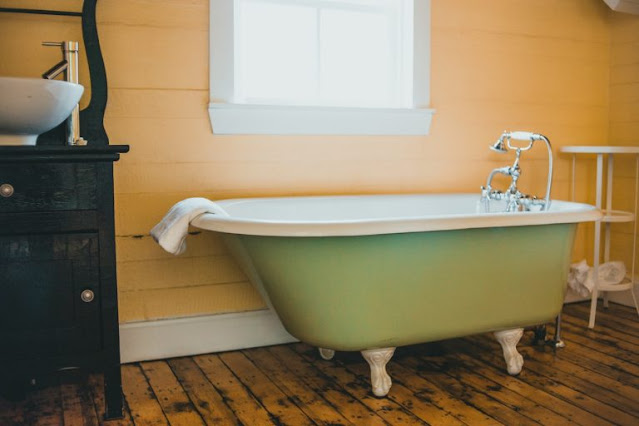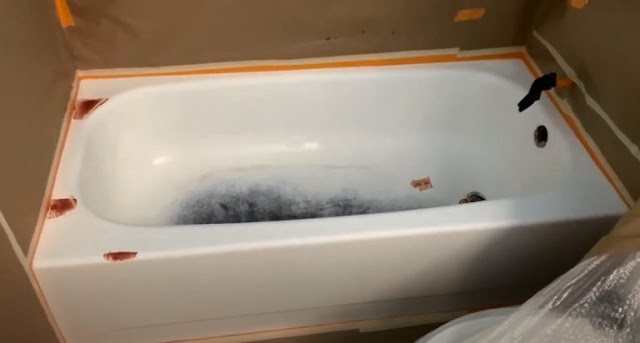The Entire Toilet Removal Process: Tips and Tricks
The toilet removal process is often one of the first tasks undertaken in a remodeling project. Loosening corroded or rusted nuts and bolts can be frustrating, but it’s not too difficult with time and patience.
Old toilets that won’t be reinstalled may need to have parts broken off before being disposed of. Have protective eye gear on at all times when breaking up old porcelain – even if you’re planning only to pick out pieces from your pile without destroying anything completely!
Old toilets that won’t be reinstalled might be broken up into small, easily managed pieces with a sledgehammer. Disconnect the toilet and cover it with a huge blanket before breaking it. Wear eye protection, long sleeves, and work gloves when handling the fragments.
Is replacing a toilet easy?
Yes, replacing a toilet is easy.
The first step to replace the old water-sucking hunk of porcelain in your bathroom with a new one may seem daunting and time-consuming but it’s actually rather straightforward. First, you’ll need to shut off all water sources like toilets, sinks, or showers before turning on the main valve that controls whether there is any pressure going into your house pipes.
This will act as protection against accidentally damaging anything else while unclogging things up down below for sure! You’ll also want to get some rubber gloves because this can be messy work if not done properly – I recommend using dish soap iced tea tree oil mix which helps cut through grease bacteria stains etc. without harming our environment too much.
Many residential toilets can be installed by a homeowner, but they are not meant to last more than ten years. After that time frame, homeowners will need someone with the right experience and tools to replace it. Many people think because of how simple removing the toilet seems, you could do it yourself as long as you have all your hands on deck.
However, there are actually many steps involved when removing toilets – from breaking down the flooring and walls around the plumbing lines (if necessary), disconnecting any water supply or gas line connections underneath them for safety reasons; to taking off old bolts which may be hidden behind walls without damaging anything else in the process.
The single most important factor in a successful toilet removal is the right tools. You need to have all of your tools handy when you start so that nothing slows you down or causes an injury as you work with stubborn pipes and bolts. Toilet removals are not just about getting rid of the old toilet; it’s also about replacing it with something new and fresh for your home or office.
What tools are needed to remove a toilet?
Tools needed to remove a toilet vary depending on the type of fixture. A water closet may need only pliers and an adjustable wrench, while a pressure-assisted model will require more tools like pipe wrenches, hacksaws, or cutting torches. Tools required for all toilets:
- A socket wrench, or pliers and an adjustable wrench
- Hammer (or pry bar)
- Flange wrenches for the bolts on the base of your bowl. These will have different sizes depending on what size bolt you are dealing with. It is good practice to have more than one size available if possible
- Screwdriver (for removing any screws in the tank that may be holding it up; also useful as general tool)
- Drain auger cable – these can be found at most hardware stores online or local plumbing supply shops. They’re basically just ropes attached to either drums or wheels which you rotate by hand while pushing them through the pipes in order to clear any blockages
- A bucket or tub for catching the water from your toilet when you disconnect it
- A towel (especially if removing a tankless toilet)
Everything You Need To Remove a Toilet
Toilets are notorious for being difficult to remove. They usually have wax or other material that needs to be softened with boiling water before the toilet can even be lifted out of place.
So, if you’re going into this project blind and want an easy way out, then there is one approach: rent a crane! If not, here’s what you need in order to tackle it yourself-a plunger (possibly), drain cleaner like Drano®, pry bar/crowbar combo tool such as Channellock Pliers® 14″ Pry Bar & 12″ Crow Bar Combo Tool, gloves for protection against any unforeseen chemical spills on your hands (optional but recommended!), bucket (recommended also).
Check this article for help on How To Remove Bathroom Fixtures & Surfaces
Techniques for Removing Toilets
Protect your floor with a tarp – when removing the toilet. if you plan to help keep the original floor covering Residue from the wax ring seal between the bottom of the toilet and the toilet flange is very hard to eliminate from floor coverings
Disconnecting pipes – between a wall-mounted toilet tank and the bowl, after turning off the water Supply and emptying the tank. Older toilets, like the main one shown above, frequently have a metal elbow that connects the tank to the bowl. Occur 2 x 4 braces below the tank before detaching it from the wall.
How to Remove a Toilet
1. Turn off the shutoff valve on the water supply line, then flush the toilet to empty the tank and bowl. Sponge tank and bowl dry, then disconnect the water supply tube at the shutoff valve and the bottom of the toilet tank.
2. Remove the nuts from the tank bolts with a ratchet wrench or basin wrench Carefully lift the tank off the bowl. and set it aside.
3. Pry off the trim caps from the floor bolts, then remove the nuts from the floor bolts, using an adjustable wrench.
4. Straddle the toilet bowl and rock it gently until it breaks loose from the wax seal between the toilet horn and the toilet flange. Lift the bowl up, then lay it on its side near the work area.
5. Remove the old wax seal from the toilet flange and horn, using a putty knife. Clean the flange and the horn with a stiff wire brush, then disinfect the flange with a strong bleach solution.
6. Stuff a rag into the drain opening to keep Sewer gas from escaping. Protect the flange with an inverted pail until you are ready to install the new toilet.
We hope you’ve found our blog post on the entire toilet removal process to be helpful and informative.
VT Lakewood Tub Reglazing And Refinishing is always happy to answer any questions that may arise during this difficult time! When it comes down to it, removing a toilet from a home can actually be quite simple when armed with the right information and tools for the job – as long as everything goes smoothly.
That being said, don’t hesitate to reach out whenever you have anything further that needs clarification because we are more than willing to lend a hand! Please feel free to contact us at (848) 233-3008 in Lakewood New Jersey.




Comments
Post a Comment